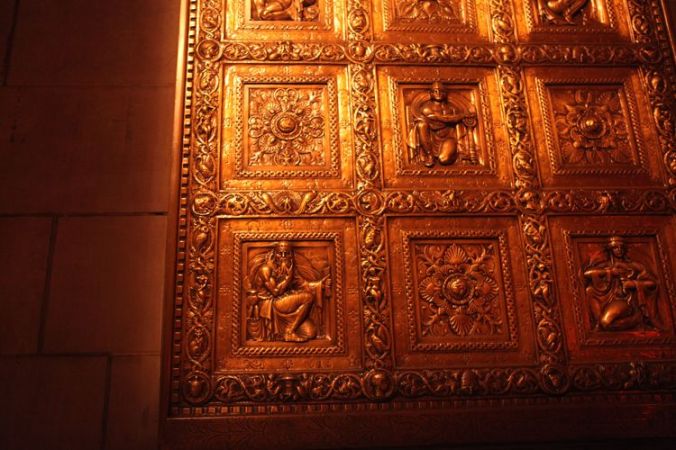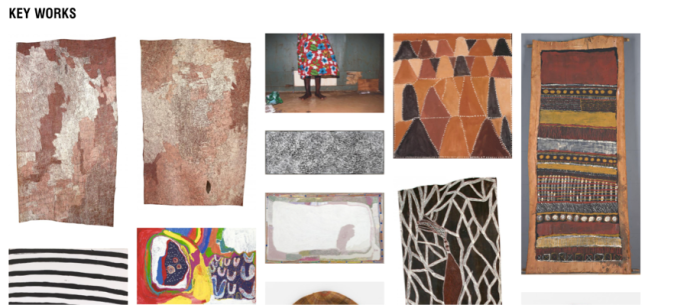
Gold, a somewhat controversial material in the realm of design and art, is the selected material of choice for some decorative elements to president trumps buildings. An article from Bloomberg highlights the mixed opinions of the inclusion of gold within the building from a series of interior designers. “Gold connotes richness, but also a sense of warmth and soul,” says Jamie Drake, known for his dramatic use of colours. Other designers believed that “overuse becomes gaudy” responding to the consistent use of golf throughout the building.
In like manner, designer John Saladino, believes “gold is meant to be a small glimmer, the delicate accent to the overall design.” It can be established that although there are many different perceptions on the effective use of gold in architecture or design, it is evident that gold evokes a sense of wealth and gaud. This notion of colour representing identity is so often overlooked as we view objects or identities from a consumer’s point of view. Colour has a benevolent power that can take design or art in any direction and target many different socieo-economic statuses.
It is interesting to see the contrasts between the different views of the interior architects that worked on president Trump’s building, highlighting the potency that gold can have on an identity.
In terms of visual appeal, the gold aesthetic evokes a real sense of wealth and power, formed over centuries from Egyptian ornaments to Roman armour. This understanding of gold as a sign of wealth is understood by many cultures around the work, however can be viewed differently by other cultures. China in this sense, use gold heavily throughout architecture and advertising as it is the colour of the emperors, a sign of good luck.
Furthermore, this notion of gold as a sign or code of wealth relates well to the case study of aboriginal artist and land rights activist Wandjuk Marika. Marika, known for his elaborate pattern work and sacred dot paintings, evokes a real sense of connection to the land with his work. Through the primary usage of earthy colours and tones paired with patterns, it is clear to see the powerful messages put forth by Marika in relation to the land. This has a similar clarity in its message to the golden accents of Trump’s building, in the sense that the message is easily recognised by most cultures and religions, just like the smile.
[1] Timothy L. O’Brien, 2016, “Donald Trump Loves Gold” (Posted online https://www.bloomberg.com/view/articles/2016-07-22/donald-trump-loves-gold-and-don-t-you-forget-in.)
[2] Fred Myers, Ontologies of the image and Economies of Exchange, (American Ethnologist, Vol. 43, No. 1, February 2004, pp. 5-20)
“Who’s afraid of Colour” – Ian Potter Centre NGV

Brought together by a range of female indigenous artists, “who’s afraid of colour” explores the notion of colour within an identity. Consisting of various works, including woven, digital and synthetic materials the exhibition combines organic works of art and juxtaposes them unexpectedly. Many of the paintings and photographs depict the artist’s views of the disadvantages of indigenous folk in society, as well as instances of racism. Such an eclectic mix of work poses a risk to the exhibitions visual coherency, however the central messages of the works maintain the same values of the indigenous story telling and identity.
This can be likened to Fred Myers’ “Ontologies of the image” in the sense that his central ideas of indigenous principals correlate with the exhibition. Myer’s explores the case study of Wandjuk Marika, who’s sacred artwork was stolen to be used on a commercial tea towel. Marika, thoroughly distraught over the scandal, questioned whether the individual who used his artwork understood the meaning behind it, perhaps overlooking the artworks message by focusing purely on the aesthetic quality. Like the exhibition, it is important to look further than a set of patterns or colours and place them in context to understand the artists true identity.
One cannot understand the social and political significance that a piece of artwork has on its artist via pure aesthetics, they must look further than meets the eye to see the real connection. It is very easy these values in artwork, especially when different cultures and religions are involved, as objectification can be often be the main protagonist when observing sacred artwork.
[1] Fred Myers, Ontologies of the image and Economies of Exchange, (American Ethnologist, Vol. 43, No. 1, February 2004, pp. 5-20)
[2] Judith Ryan, Who’s afraid of colour, December 2016, Posted online (http://www.ngv.vic.gov.au/essay/whos-afraid-of-colour/).
I think the point that has been raised about how we look at different cultural and past uses of gold as ornamentation and the main component of architecture and design is really crucial. When I first read that the Trump buildings use gold within their designs I felt uneasy, it raised this idea of an abuse of power, wealth and privilege. But what difference is there in Trump using gold in his buildings compared to the Egyptians using it in their Pyramids or Chinese in their temples?
It has made me realise the relativity of the gold, in a time right now when I can see the effects of wealth on people and on those who do not have it, gold seems like the last thing that should be used in a building, a visual waste of money that could serve a much higher social service need. But whose to say the same feelings towards gold were held by the Egyptians or Chinese who were less fortunate or slaves to their leaders. It has become so easy for us to see gold in the past as a beautiful thing, compared to today where it is overlooked and seen as such a negative statement.
LikeLike